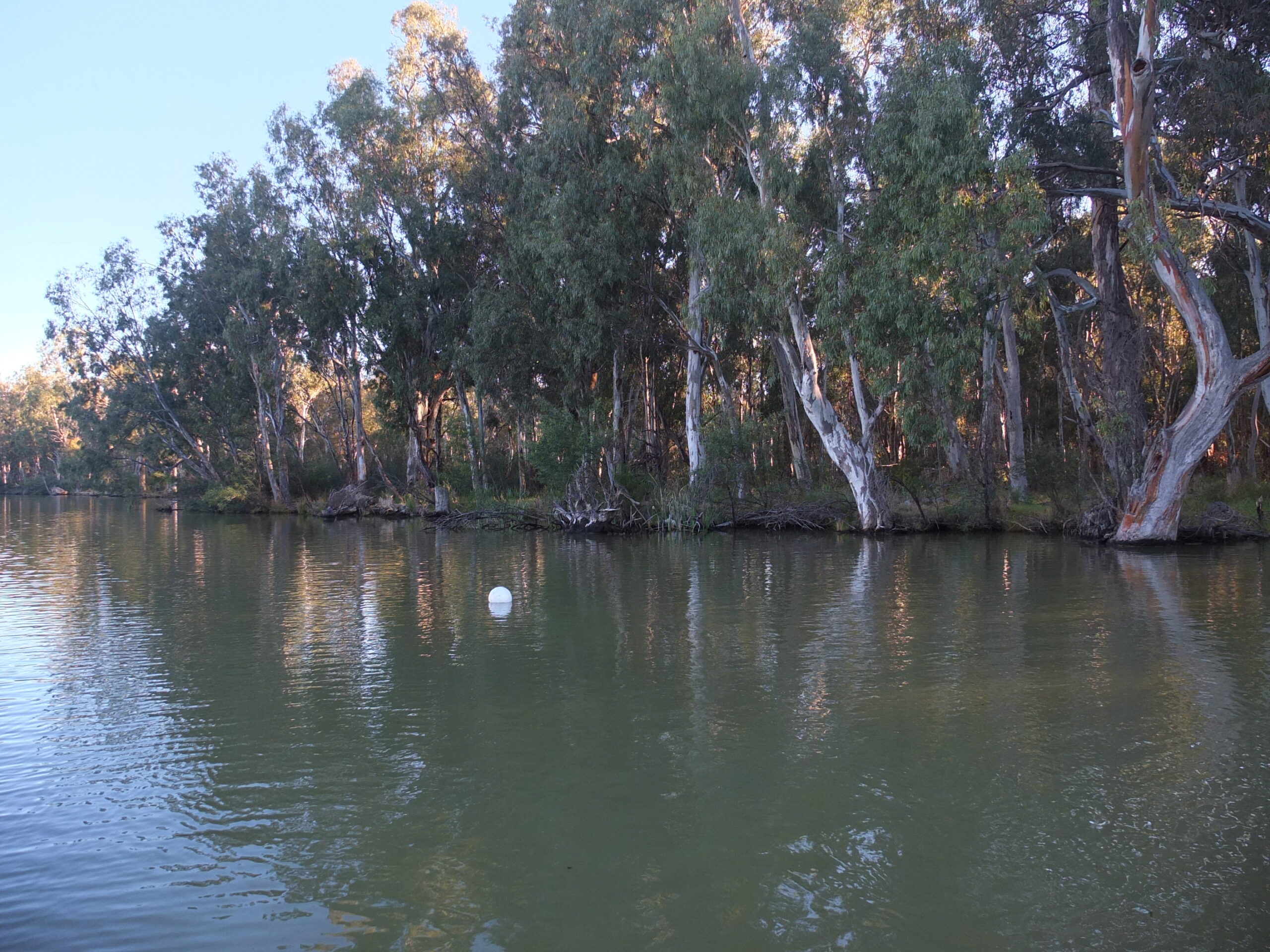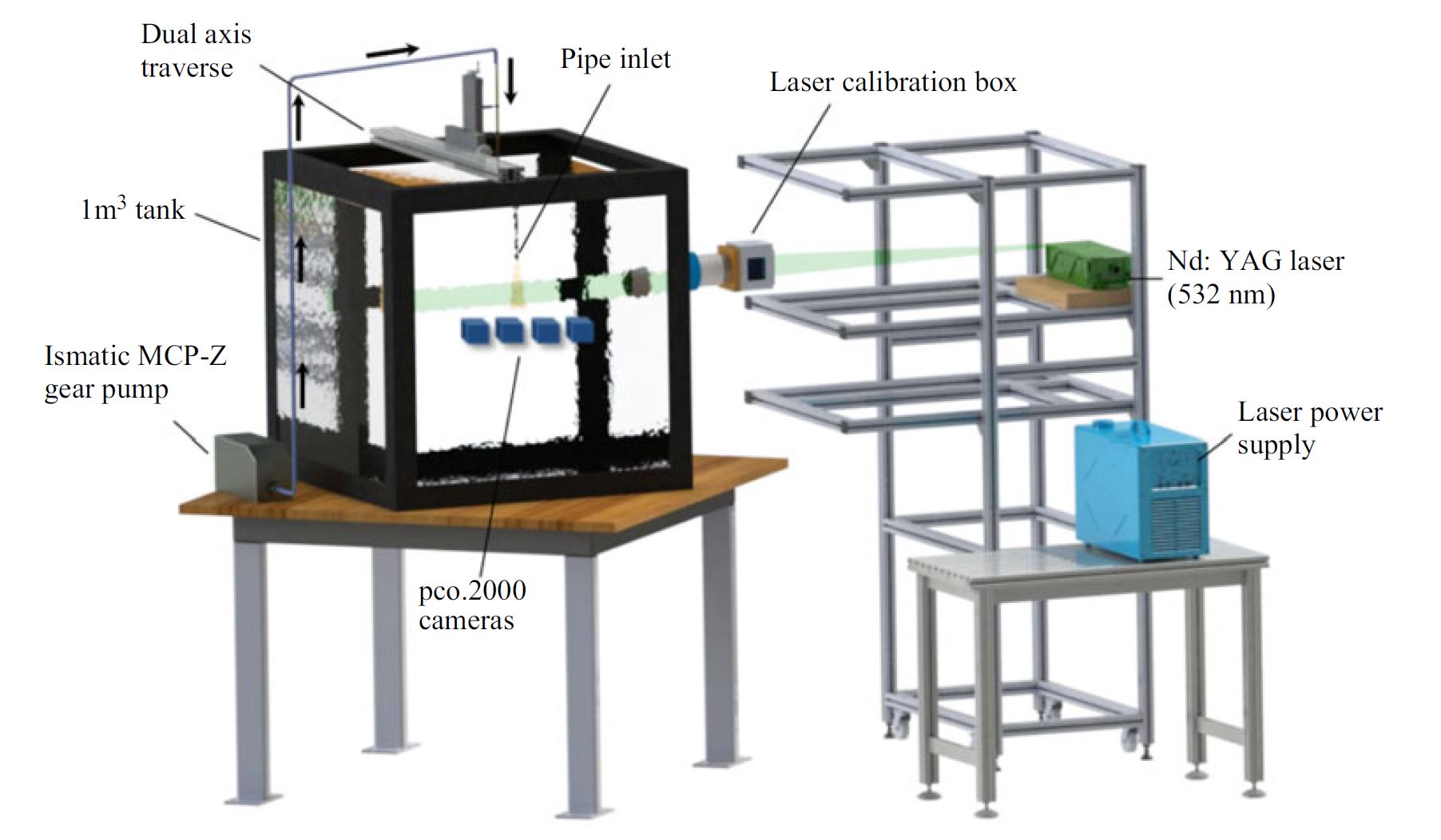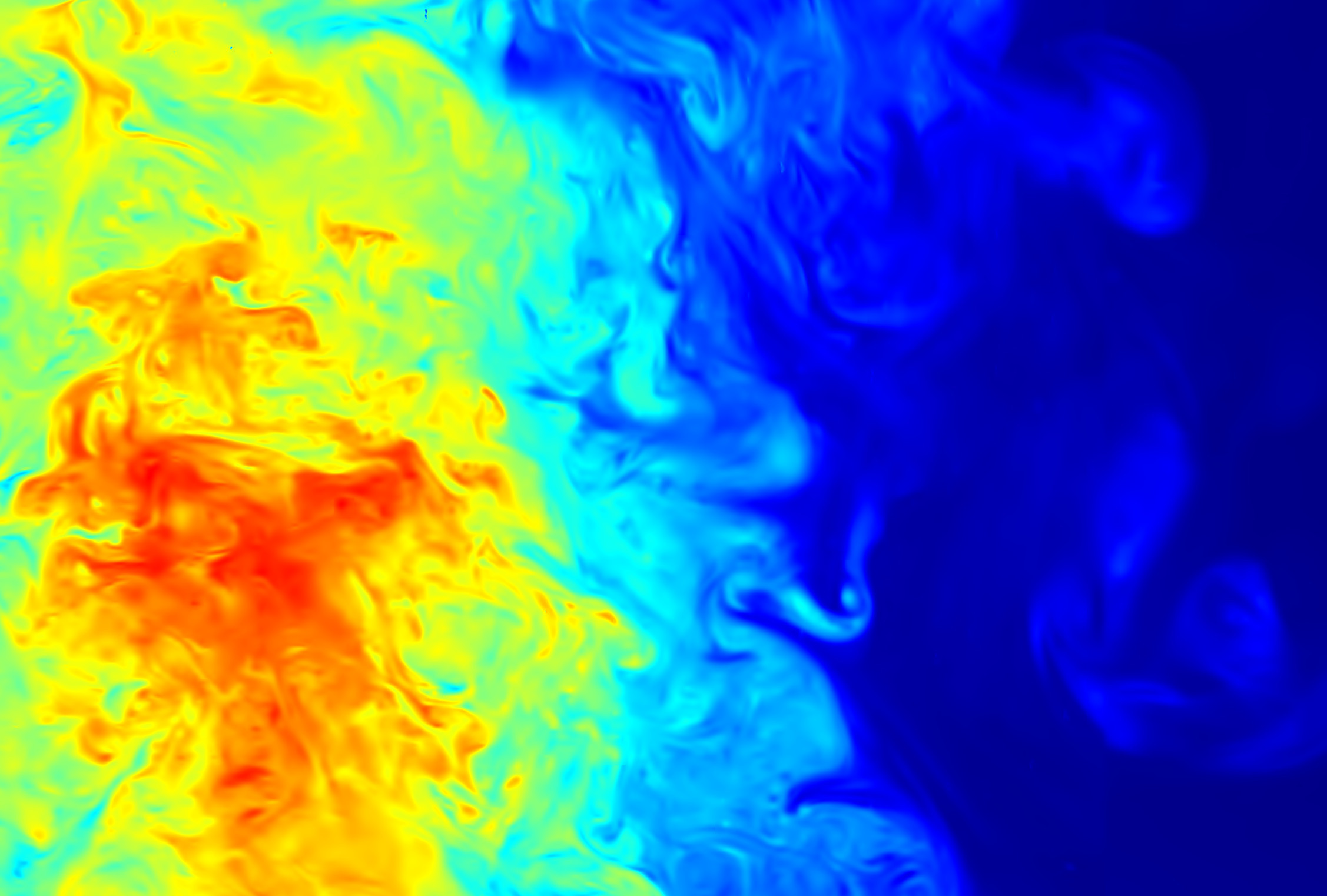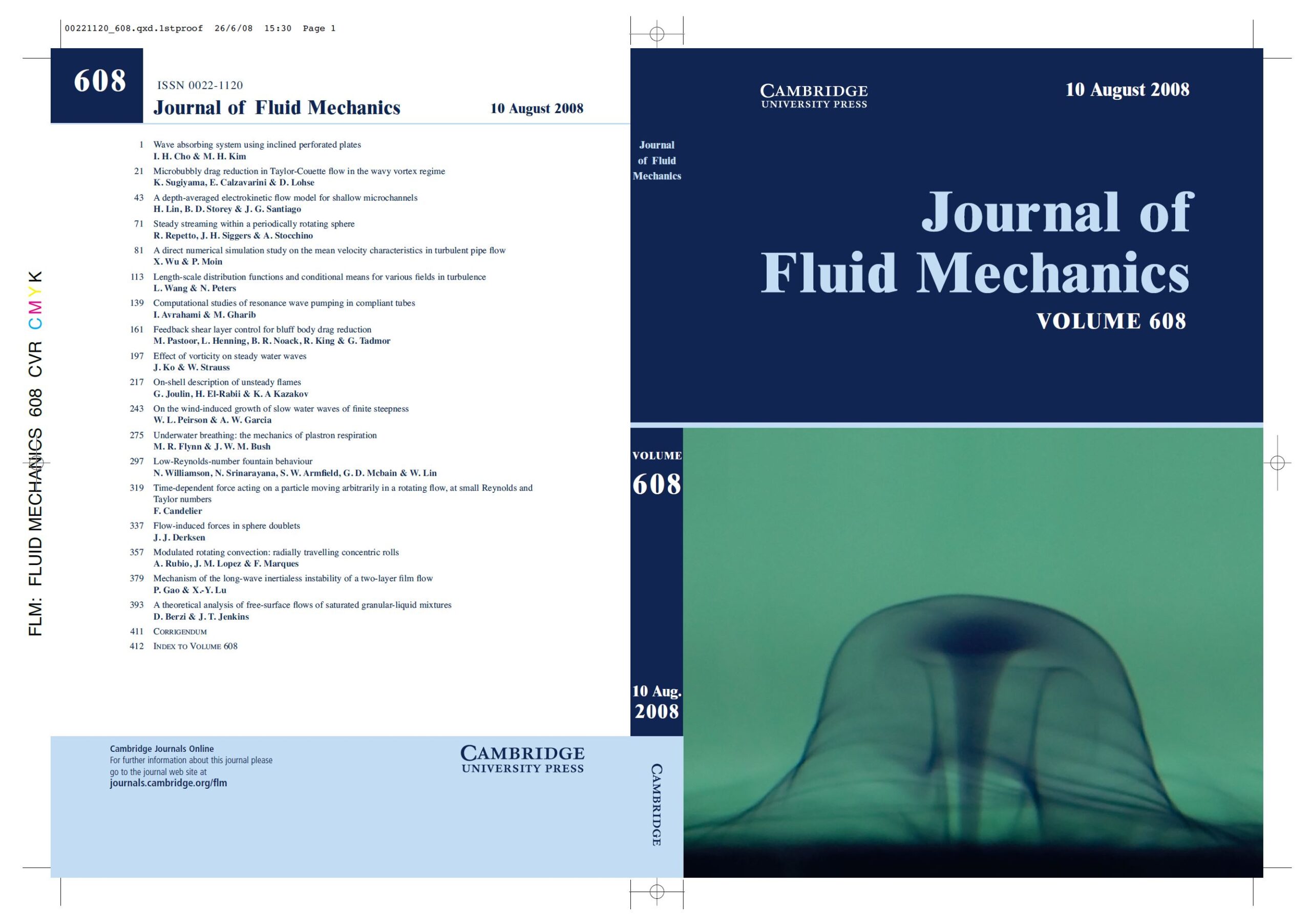Our group has a fully equipped fluid mechanics laboratory designed to study variable density flows in fundamental canonical configurations. We focus on both density stabilised and destabilised flows spanning the laminar, transition, and fully turbulent range. Recent projects include the investigation of how density variation in turbulent jets modifies mixing and entrainment; the investigation of mixing regimes in stable two-layer sheared density interface; the investigation of how smoke transmission through a building can be controlled; the investigation of flow through a coral reef and the investigation of flow around a river bend.
In these investigations, we use non-invasive laser diagnostic system. The laboratory is equipped with two independent 2D Particle Image Velocimetry and Laser-Induced Fluorescence systems capable of providing velocity and density measurements in a plane. The laboratory is also equipped with a high-speed tomographic PIV system. We also make use of high-speed Acoustic Doppler Current Profilers and high-speed micro-scale conductivity-temperature probes. The laboratory has several large straight flumes and two flumes with a 180 degree bend capable of reproducing a wide range of flow conditions experienced in river bends. The laboratory has one large flow tank.
This page showcases some of the work produced by this laboratory.
For inquiries related to these facilities please contact: Assoc. Prof. Nicholas Williamson, Prof. Steve Armfield
In-situ measurements of turbulent mixing
An important part of our investigation of environmental flows is the deployment of high fidelity laboratory accurate instrumentation to field locations to take in-situ measurements. We make use of an array of commercial instruments and also build our own instrumentation for custom applications. Our group uses high-speed laboratory ADCPs (Nortek Vectrino Profiler), FP07 thermistors, conductivity probes and for larger-scale measurements, we use a Teldedyne RiverRay ADCP. We are also developing a high-speed micro PIV system for use with high-speed thermistors and oxygen probes to understand the turbulent transport processes in the environment.
Thermal Stratification and Turbulent Mixing in the Murray Darling Basin
This project focuses on understanding how turbulent mixing is suppressed by strong thermal stratification in inland Australian rivers. The project is supported by the ARC through DP220100706 ‘Dynamics of suppressed mixing regimes in Australian rivers’. We have an active industry partner in the Murray Darling Basin Authority. One of the aims of this project is to be able to predict the onset of strongly stratified flow conditions. Our field instrumentation is deployed to measure the turbulent heat flux through synchronised velocity temperature measurements and directly obtain measurements of turbulent mixing processes.


Multi-scale PIV+LIF system with LIF correction algorithm in aqueous flows
Our laboratory investigations make extensive use of combined particle image velocimetry (PIV) and laser-induced fluorescence (LIF) measurements.
Buoyancy in Free Shear Flows
The images to the right show an instantaneous scalar concentration field (upper panel) of a negatively buoyant jet measured from a combined particle image velocimetry (PIV) and laser induced fluorescence (LIF) experiment.
The flow is obtained using a freshwater, Ethanol and Rhodamine 6G source solution directed into a 1m3 saltwater ambient through a 10mm diameter pipe. The images shown corresponds to a negatively buoyant jet 17 diameters downstream of an inlet with a source Reynolds and Froude number of Reo=5900 and Fro=30. At this downstream distance the local Froude number falls in the range Fr=6.63 – 4.80, decreasing in the streamwise (upwards) direction.
Selected Publications:
- Milton-McGurk, L., Williamson, N., Armfield, S., Kirkpatrick, M., Talluru, K. (2021). Entrainment and structure of negatively buoyant jets. Journal of Fluid Mechanics, 911, A21
- Milton-McGurk, L., Williamson, N., Armfield, S., Kirkpatrick, M. (2020). Experimental investigation into turbulent negatively buoyant jets using combined PIV and PLIF measurements. International Journal of Heat and Fluid Flow, 82, 1-8


Instantaneous scalar concentration and turbulent scalar fluctuation fields of a negatively buoyant jet, obtained from combined PIV and LIF measurements
Mixing at a density stabilised interface
When a density interface is subject to shear instabilities can form leading to turbulent entrainment. This flow commonly occurs in the environment. This flow has been investigated in our laboratory using custom-built flumes with saline/fresh water. Laser induced fluoresce image sequence for flow at Rib=4.1, Rig=27 and Re=7100 is shown here. Images are in false colour indicating fluid density. Flow is from left to right
Selected Publications:
- Williamson, N., Kirkpatrick, M., & Armfield, S. (2018). Entrainment across a sheared density interface in a cavity flow. Journal of Fluid Mechanics, 835, 999-1021. doi:10.1017/jfm.2017.796
Mixing at a density stabilised interface
Dye Visualisation and light attenuation techniques
Our group also makes use of light attenuation methods for both quantitative measurements of flows and qualitative characterisation of behaviors. Two example projects showcase these methods.
Low Reynolds number fountain behaviour
The image shows a round jet of saline water rising upward through a quiescent body of freshwater. The density difference between the jet and the ambient fluid produces a buoyancy force that opposes the initial jet momentum, leading to fountain-like flow. In this image, the rising fluid column appears sinuous. This is a result of a traveling wave that rises up the fluid column. The shear between the rising jet flow and the descending plume initially produces this instability which ultimately leads to the collapse of the flow a short while later and the transition to turbulence.
Publication:
N. Williamson, N. Srinarayana, S. W. Armfield, G. D. McBain and W. Lin (2008), Low Reynolds number fountain behavior, Journal of Fluid Mechanics, 608, pp. 297-317 doi:10.1017/S0022112008002310


Low Reynolds number fountain
Confinement of smoke from building fires by an air-curtain
The images on the right are obtained using a dye attenuation technique where measurements of light transmissivity can be used to quantitatively determine flow density. The experiments took place in a tank of water with a round plume supplying a continuous source of buoyancy to model building fire. Across the interior of the tank, a line jet was introduced to mimic an air curtain flow. The problem is directly relevant to fire safety but also contributed more broadly to our understanding of air curtain dynamics in a range of other applications such as HVAC and refrigeration.
Publication:
Kaye, N., Williamson, N., Huang, D., Armfield, S. (2021). Buoyancy distribution in a filling box segmented by a planar jet. Environmental Fluid Mechanics, 21, 239-261.

